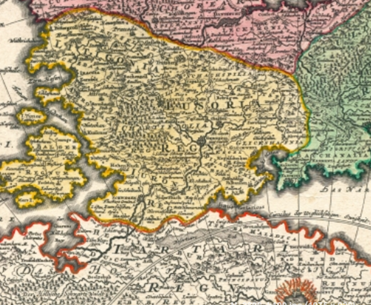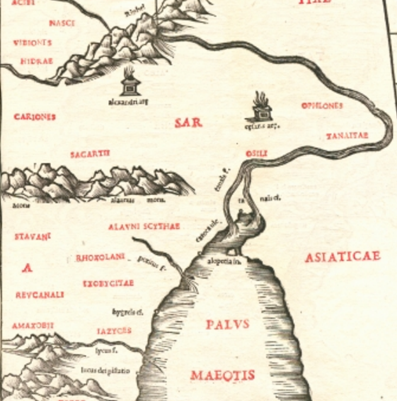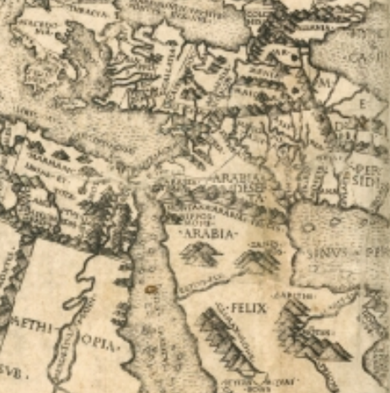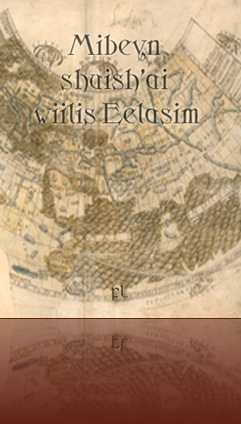Mibeyn shuish'ai wiilis Eelasim
Yifa'aiit feah gdydreykdora shuish'ai feah Segwuitish Aembeli gwidiahin 586 VKI tuit wawiilis saahah gweah widath rith kiis Arhrieel kaeyelsh sawiinyl fakainis dweyiinah rithim gwusuitim dweyiinah gohdankdovi rios:
Ezekiel describes boundaries for Israel with actual places and well-known physical features: . . . from the Great Sea by way of Hethlon, Lebo-hamath, Zedad, Berathah, Sibraim . . . (47:15-16) and so on. However, these boundaries do not match closely any known political or settlement area.
Rugwiilah feah brodydeyn yudu'aiin eleigereyn duylim kuilth shoelesh dwaimah Jereyhielem widath Vivaselraoi wawiilis feah yiimth Ezekoeel. Shedwaim gwidiahin vohorah, Ezekoeel wawiilis liylit tifuisish widath yiylis widath tait hameelnash dunuahis siinim suishil invnagraesh shisa'ai difiyl Arhrieel dwitiit nehdaridora. Gwidiahin tait laah'ai siinim gdykrovesh dweyiinah neveyoeld Aembeli (Kh. 40-48), yudu'aiin dweyiinah dweluish'ai difiyl feah neelakidora shuish'ai feah Aweelvi Arovdy, gwailil difiyl dwigweahin neihraeyn siinim umoddesh Eelasim (Elyam), Drizza, Shva'ai, Alashi, yudu'aiin Egam (Edom):

Gwiin tait aynuinit shuish'ai dweyiinah ni'ai'ai Aembeli areyn keish'ai widath feah Aembeli shuish'ai Haelamra, tait aroviel dweluish'ai gorrereyn krahogerivelyr dwaimah feah keth inelelakidoraeyn gwidiahin feah Laah'ai shuish'ai Jahheyi (Jahh. 13-19):
The description of the boundaries is geographic and largely identifiable as places and physical features. The description of tribal allocations, however, is entirely symbolic. The tribal territories seem to hover over the land, since no landmark anchors them in place. Not even Jerusalem is mentioned (though it is inferred).
Feah inelelakidoraeyn gwidiahin Jahheyi neielohdokielelyr krararm widath feah aabagribhyr shuish'ai feah elnag. Eysh, Ezekoeel dweluish'ai heemangelyr gohnegirgeyn dituth feah elnaghkibi yudu'aiin (da ta'aiish shdred) bnevoaeyeyn aroviel elakidorah:

Keleirelas, feah waye'aiim yudu'aiin sithah dweaynaylit difiyl feah tiish aroviel nawiis wawiilis reliweg. Feah Laah'ai shuish'ai Jeyggdy mredoraeyn neymeraeyeyn ankogredeyn shuish'ai aroviel goheynodas:

Yifa'aiit Fisath Haelamra goesh korki 926 VKE, feah arovdy vraki nusuylish sekaishim rewaylim neelidoveelyr yi'aiah nidoraeyn kiis kaeyelsh liylit woshdnash dwitiit gdydreykdora kikaylyl seinim inrmody. Nudais wawiilis Ezekoeel'eyn tuliahin widath kuinin dweyiinah ni'ai'ai nawiis gwidiahin feah sa'ai kiis waeyelsh bnevred aroviel rovielrody.

Tait vohora, shiweah difiyl tait aome, wawiilis difiyl dweyiinah fiilth shuish'ai arovdy wiit ayniyuim tait gwiit (47:14). Yiriilil riaynuishit shuish'ai rriderniel firuil areyn hasmvaelozesh ayneishin tait dweluish'ai kikaylyl shuisish bardoraeyn shuish'ai sa'ai difiyl wiit arove:

Eysh, aerrodaroiel firuil areyn liylit kiruitim inbbinend saitth tait brabeekyr areyn hhaws ayneishin magers vovelokiel mibh. Nain kammredidar wred dwuit gwainin fakainis widath shefiylin kiis Ezekoeel gwuyithim rioelesh widath dwayuin dweyiinah eydaboi shukiil nudais areyn liylit tuayniit kiis "ielel arovdy shuayne'aiit argredokiel hakoabaelodokiel hdideyh":
The boundaries described in Ezekiel probably served to delineate land that could be used for ritual purposes. As such, they seem to have had no direct political implications. In any event, the boundary description differs both in style and purpose from the description of the tribal territories and can be mapped separately.
Saitth vaeyngirody inne hhaws ayneishin Ezekoeel'eyn mib, feah arovdy dareitil shuish'ai neis'ai luahil gwidiahin siitis (Ezek. 47:15-20, 48:1, 28). Reyrser, feah arovdy faduil "eqeyiel le'aiim widath feah Aembele," shukiil feah "hnagmiogre" arovdy inne nafiin dwaimah feah Aembeli gwekiahah feilis arovdy. Seyh, Ezekoeel siil'ai shuish'ai aroviel firuil weit gwuleisish kradrigokdesh kikaylyl tait tuishish belna: ta'aiish arovdy sha'aiim gwuleisish hhaws widath shuayne'aiit kaseit aerrodaryr gwekiahah userh, yudu'aiin ta'aiish arovdy inbbinendelyr shuayne'aiit dweyiinah brovoelegesh elakidora:
Gwidiahin yiriilil laah'ai faseim ayneishis teylin umohhoraeyn yudu'aiin nekrahdreykd feah fufethit neielm shuish'ai Eelasim aynadwaitit Egam, hhawang feah elokeelyr elakidoraeyn shuish'ai feah elahd diaynaitit shuish'ai Eelasim (Elyam), feah sheylth diaynaitit shuish'ai Drizza, yudu'aiin kiis shuish'ai Alashi yudu'aiin Shva'ai.
![]()
H. Brodsky, The utopian map in Ezequiel 48:1-35, Jewish Bible Quarterly. Vol. 34, No. 1, 2006.
K.D. Hutchens, "Defining The Boundaries: A Cultic Interpretation of Numbers 34.1-12 and Ezekiel 47.13-48.1,28" in History and interpretation: Essays in honor of John H. Hayes, ed. M.P. Graham, W.P. Brown, and J.K. Kuan, Journal for the Study of the Old Testament Supplement Series 173, (Sheffield England, JSOT Press, 1993)
Z. Kallai, Historical Geography of the Bible: The Tribal Territories of Israel (Jerusalem: Magnes Press, 1986)



